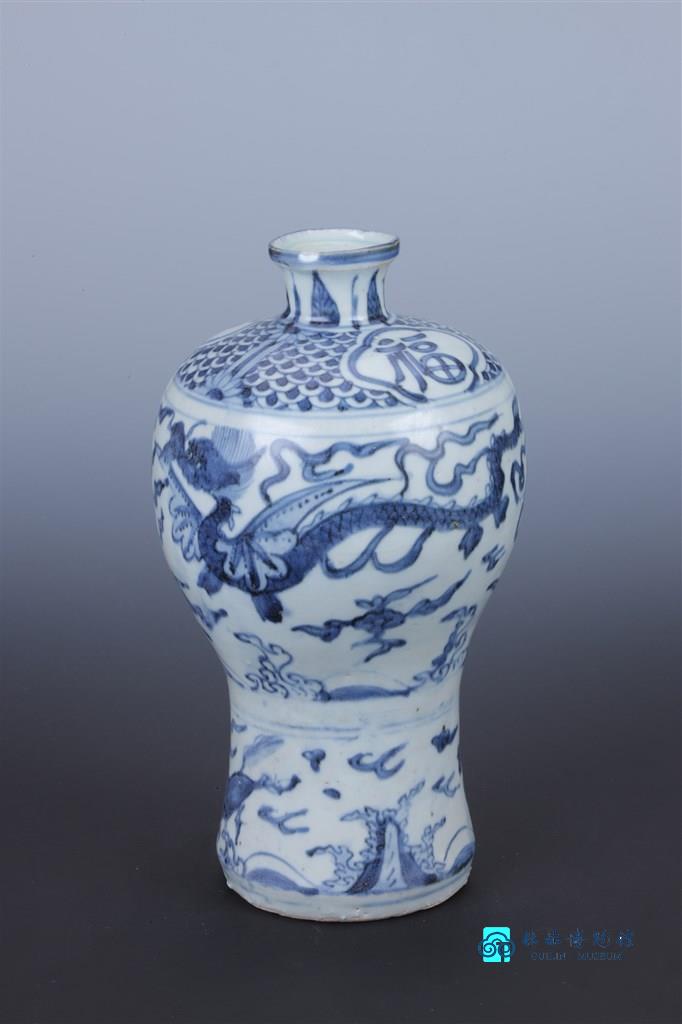Prunus Vase with Blue-and-White Designs of Winged-Dragons Chasing a Pearl and an Inscription of "Auspiciousness and Longevity" Made in Wanli's Reign of Ming
The themed design on the belly of this prunus vase is two winged-dragons chasing a pearl. Winged-dragon refers to the millennium-old dragon with wings. The two winged-dragons dance in the air with their wings stretched and chase after a blazing pearl. It is said that a carp can turn into a dragon after one thousand years of cultivation. A dragon can turn into a horned dragon after five centuries of cultivation, grow wings and reach the highest level--becoming a winged dragon after one thousand years of cultivation. According to legend, winged-dragons were the fairy dragons in ancient times. It is recorded in the Record of the Wild North from the Classic of Mountains and Seas, a Chinese classic text and a compilation of mythic geography, that the winged-dragons once became meritorious statesmen by suppressing Chiyou, a tribal leader of the ancient Nine Li tribe, under the command of the Yellow Emperor. It is said in Tian Wen from the Songs of Chu that the fairy dragons once made a contribution to draining floods by engraving the ground with its tail when Yu the Great tamed the flood. Their images are usually seen on jade carvings of the Warring States Period, and stone carvings and silk paintings of the Han Dynasty.



